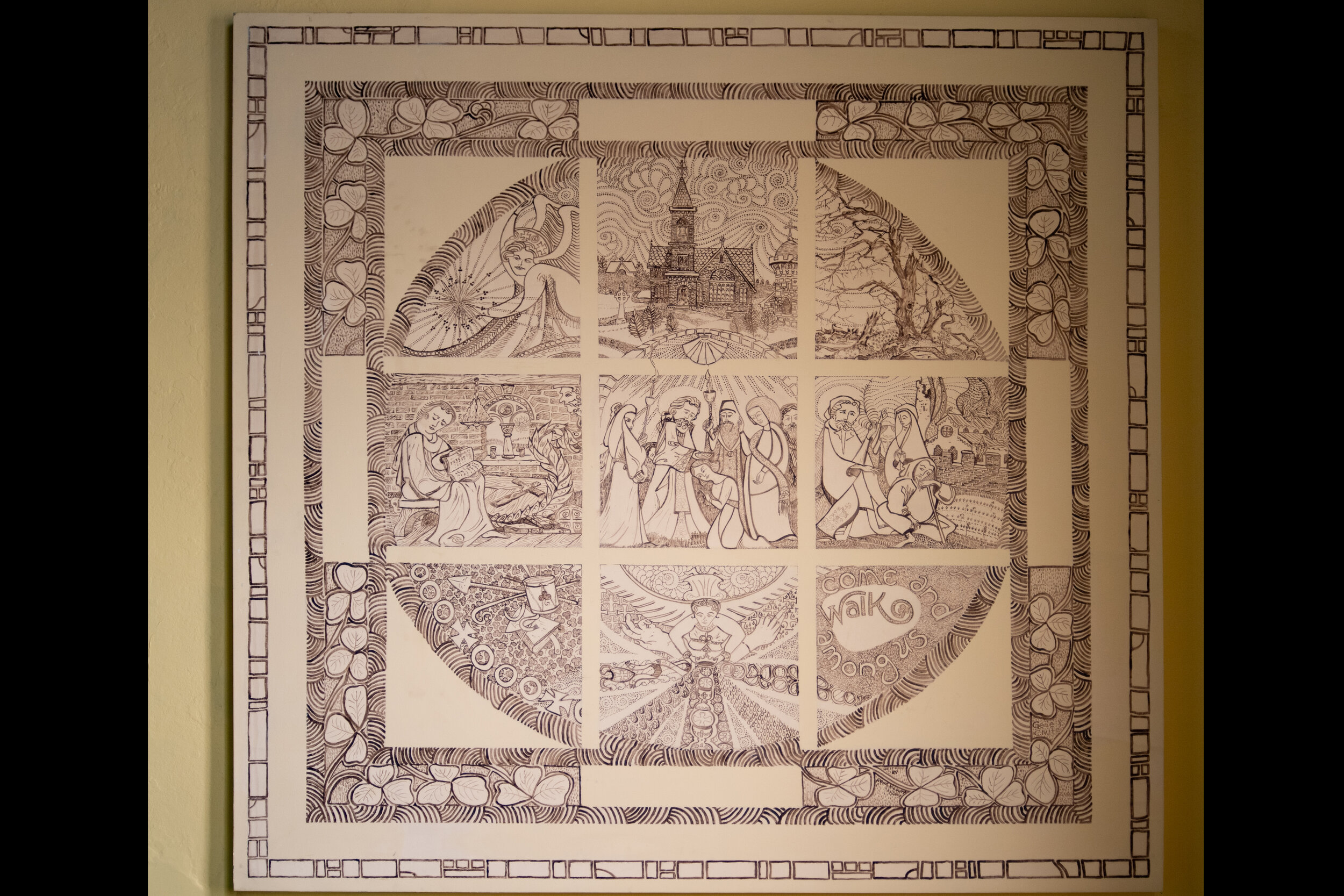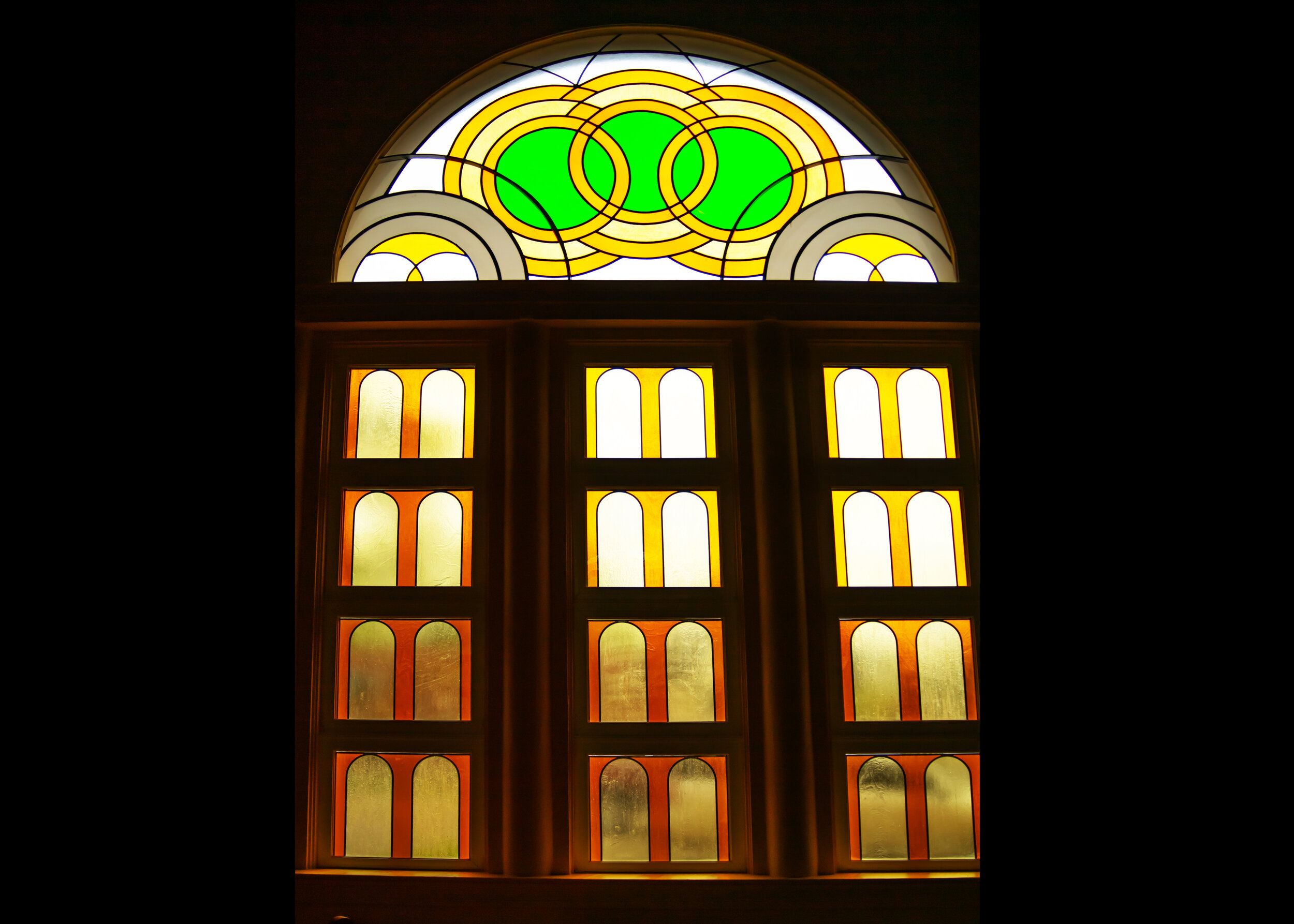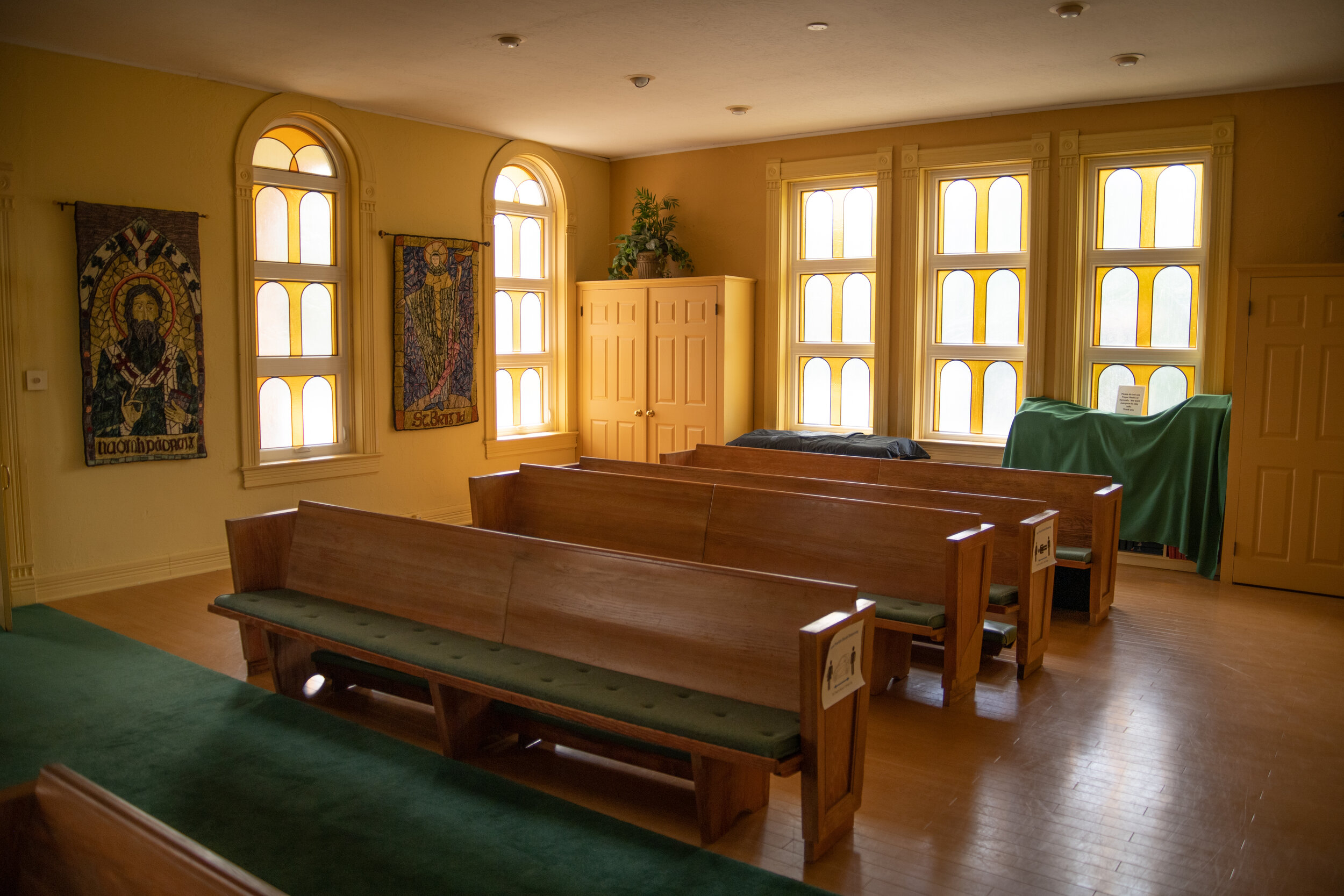At St. Patrick’s Episcopal Church…
We believe everyone matters to God even if God doesn’t matter to them.
We appreciate where we’ve been, while not being afraid to move forward. We are a progressive congregation that cares deeply about our environment, and views our youth as the key to the future. We welcome folks from all backgrounds, inviting all to become valued members of our community - and we mean it! Only half of our congregation was brought up Episcopal!
Our worship style is unique: we celebrate and uphold tradition, but we’ve ditched the formalities; we are open to questions, seeking answers and strength as a community; we are dedicated to following the Word, and the path we see the Spirit leading whether or not it is the current trend.
We have many active and vibrant programs serving our community and that of the wider world. Our ministry starts at home and moves outward in myriad directions, with many opportunities to find one’s place of service.
HISTORY
Originally built in 1893, St. Patrick’s Church, like any building truly lived in, has come to reflect the people who occupy it. Apart from the actual structure of the building, members and friends of the congregation have designed and/or created nearly every feature of this space. In particular, there has been an intention to honor the future and the past, express hope, openness, and welcome, and to remind us of the perfect love of the trinitarian God and our duty to reflect that love out into the world. When we gather as a community on Sundays we celebrate God not only through scripture, prayer, and hymn but also through the art and symbols surrounding us.
ART + ARCHITECTURE
St. Patrick’s was built in 1893 in the Romanesque Revival style of the Victorian period. One characteristic of this style is the rounded arches and heavy decor. Remodeled in 1965, the aim was to keep it light and modern while retaining its traditional feeling. Founding member Gene Chute was the master designer of the sanctuary space, including the wrought ironwork, murals, stained glass windows, and color scheme. The wave-like semicircle of the dais leading up to the altar and the lecterns were designed to support an open congregation, with the idea of bringing the people closer to the table.
A statue of our patron, St. Patrick, welcomes you as you enter the front door. The marble on the welcome table is Norwegian and was once part of our altar. Above the table is the Jesse Tree, which shows the line of David from Jesse to Mary and Jesus. This line drawing with plastic overlay was done by Roberta Maple.
A dossal curtain (a large embroidered piece created by Rosemary Chute) hangs at the back of the altar. Divided into two sections, the upper section focuses on God, the bottom on humanity. Created on natural linen, the gold represents purity and the green hope. A Celtic cross lies center, with a circular glow, a symbol of God and eternity. Below is an elaborate Gordian knot, a metaphor for a complex problem with a simple answer, enclosing the circle divided into the four corners of the world and a Greek cross. The kneelers include various motifs within crosses, including shamrocks, the Latin cross, a descending dove, fleur-de-lis, grapevines, the chalice, forget-me knots, stacks of wheat, and grapes. The Turkman rug lying behind the altar bears a tree of life design and a sea motif on the very edge, echoing some other designs in the church. Festival vestments that go with the dorsal curtain were also created by Rosemary Chute. As with the curtain, she has used negative Greek crosses, wheat sheaves, and circles that remind us of St. Patrick’s ministry. The green chasuble, burse, and veil, for use in the season of Ordinary Time, were designed and hand-woven by Mimi Cooper.
The paten was designed by Gene Chute with a negative Greek cross of four sheaves of wheat arranged in a square, matching the vestments. Like the chalice, it is made of sterling silver washed in gold.
Our chalice, made in sterling silver by a local artisan, is the center of the church. The cloisonné enamel shamrock on the chalice is on a blue field of purity and heaven. Shaped from a sheet of flat silver, the top of the chalice is slightly beaten and rough, another blend of new and old. The inside is washed with gold (triple-plated) and in the base of the chalice are pieces of preserved bog oak that David Thornberry (former archdeacon of the Diocese of Southern Ohio) gave to St. Patrick's. A stump of oak bogwood was found on the Thornberry land in Northern Ireland near Armagh, the site of Patrick’s first church. It was very ancient when Patrick was on the earth and it is believed that he stood on it when he preached. The Thornberrys removed a piece from this stump for the family use before the remaining portion was given to the Smithsonian. Bishop (WY) Thornberry had his pectoral cross made from a piece and St. Patrick’s was given the remnant.
The triumphal arch present at the front of the church is repeated in its windows, as are the gold and green color themes. At the top of the windows, we have an imperfect shamrock representing the Trinity. The sections are not exactly equal because we usually think of the different aspects of the Trinity with greater emphasis on one member at any given time.
Our baptismal font was presented to the church on its tenth anniversary, March 17, 1972. The font and the cross on top were designed by Marjorie Donovan to echo the brass furnishings at the head of the church. Like the walnut altar base, retable, acolyte benches, railings, lecterns, and triptych which frames the dorsal curtain, the cabinet of the font was custom made by Walter Miller. The brass Celtic cross is surrounded by a wrought-iron shamrock, studded with reconstituted emeralds, and displays squares of the same bog oak as in our chalice at its center. It was fabricated by the Meierjohan Art Metal Company of Cincinnati, who also made the large processional cross. The stepped base of the cross represents the hilltop at Armagh, Ireland, the site of St. Patrick’s cathedral. On a visit to Armagh in 1971, the Donovans picked twelve stones from the hilltop which are placed in the crystal bowl with the water each time there is a baptism.
Processional Crosses: The small wooden processional cross with matching candlesticks was designed and made by David Donovan, then aged fourteen, when the congregation was meeting in the old Oswald Funeral Home. It was St. Patrick’s first processional cross. Its simplicity of design makes it especially appropriate for use during Lent.
Processional Crosses: The brass cross has three crowns on its ends representing Father, Son, and Holy Spirit. The center of the cross holds an atom-like form that constantly reflects light back and forth. As the cross is carried forward, the ideas of the congregation, like the light, are constantly moving about. The cross is very heavy so that whoever carries it is reminded that it is a cross and that the cross is difficult to bear.
The arms of the chandelier are twelve in number, reminding us of both the tribes of Israel and the apostles. The sphere below is slightly off-center, like our own world. The light bulbs are exposed and round to shine like the light of our minds. They are supported by chalice and wreath forms, representing the wine and wheat in the elements of the eucharist. There are seven balls at the top, the number of sacraments of the church.
In the belfry of St. Patrick’s is a working church bell cast at Malaga, Spain in 1632. The bell pull is found in the corner of the narthex. During the political troubles in Spain in 1835-1837, the government suppressed all convents and confiscated their property. This bell was one of 100 shipped to New York City to be sold at auction. The bill of sale and receipt dated February 27, 1838, lists the cost at $140.47 plus approximately $60 shipping. The bell was shipped by canal from New York to Philadelphia and by canal and wagon from Pittsburgh where the yoke and clapper were made. It came down the Ohio River and over land to Lebanon. Originally purchased by the Cumberland Presbyterian Church, it was moved from their previous location to the belfry of what is now the home of St. Patrick’s Episcopal Church.
The pictures on the west wall of the sanctuary were done when St. Patrick’s congregation was very young and met in the old Oswald Funeral Home. They depict a series of Christian symbols, all done by Gene Chute in line drawings, overlaid with plastic for color. The tapestries on the east wall of the sanctuary depicting icons of St. Patrick and St. Brigid were done in hooked wool by Becca McLaughlin. The more modern pews in the aft sanctuary were donated by another church. They were modified to their current form by a local artisan woodworker.

Top Left Panel – A flourishing tree- Many of the Celts worshipped trees, or the wood itself. Two of the symbols most used in this religion are the fox and the owl. Top Right Panel - An angel or a guiding force – either a person or an idea. Center Left Panel – Soldiers who pillaged Ireland – Mostly these were the Norse Vikings and the Scots. The Celts are said to have captured Patrick. Center Middle Panel - Patrick being lead into captivity – His face is covered to show that he is captive. The fish, symbols of Christianity, move back and forth. They are uncontrolled and out of line. Center Right Panel - Legend has it that, while a captive, Patrick was a swineherd and had to eat the same food as the pigs. Patrick is tired here. There are many circles because we are talking about God. He has raised his head and is looking at the angel in the upper right section. The Angel, a messenger from God, is trying to tell him something. Patrick seems a little slow to understand. Lower Left Panel – The words that came to Patrick in a dream. Lower Middle Panel – Patrick is asleep on his bed. He has escaped from Ireland and is a rather wealthy young man. Below the bed are cobwebs where the book of knowledge, perhaps the Bible, is lying dormant. An empty cup, symbolic of his state, is also there. There is a shamrock under the bed to represent a precursor of his duty. The cock, a symbol of vigilance, is in the window getting ready to crow. In his sleep, he hears the words “We beseech thee holy youth come hither.” Lower Right Panel – Circles of coinage being turned into circles of rings and Greek crosses. Buildings are turning into churches. The background of money and grain are turning into crosses.

The Northeast Mural: Representing Patrick's ministry to the Irish. Top Left: An angel (possibly representing Patrick's conscience), pesters him all his life. Top Middle: A building similar to our own, echos those in the NW mural. Patrick had an interest in building churches and congregations. Below the building is a shell -symbolic of wisdom and enlightenment, also of baptism. Top Right: The tree from the other mural is now withered and decayed; old religions have given way to Christianity. Center Left: Patrick studies his book, contemplates the cross, and keeps track of time. The lamp is lit. The shamrock is there. The floral wreath represents the alphabet. The window is shiny, unlike in the other mural. The wine glass on the window sill is full. Center Middle: Patrick is converting and baptizing. The Judaic figure in this panel represents Patrick’s interest in the Old Testament and in keeping Jewish traditions. The shell of enlightenment is rather like a Pentecostal theme, lighting up the center scene. Unlike the confusing early scenes of the first mural where the cross was broken in many spots, symbolic of confusion, in this mural, we have only one broken area where the flame of enlightenment is breaking through from top to bottom. Center Right: Churches are burned by invading barbarians. The Christians, who lived in the community with more industry and money, were easier to attack. Patrick had to keep rebuilding and re-establishing his congregations after raids. Lower Left: Symbols of Patrick are prominent. Rings and Greek crosses, an old spade (representing building), a drum (Patrick is said to have used a drummer boy to gather crowds before delivering his message), the cane or shepherd’s crook (the symbol for Bishop), the Bishop’s miter, a little cross, a book with a marker and a shamrock on it; the background is all shamrocks. Lower Middle: The angel of duty, still unpleasant, holds a crown of victory, the crown of heaven, a symbol of our acceptance. The rays represent the seven sacraments. Directly below the angel is the central sacrament, the Holy Communion with chalice and wafers. Upward to the right are drops of water for baptism; interlocking circles and Gordian knot, symbols of marriage; at the top the absolving hand of forgiveness. Back to the Holy Communion, upwards to the left; confirmation; the three levels of the priesthood; the healing hand of unction. Lower Right: The end of the quote in St. Patrick’s dream, “Come and walk among us.”















